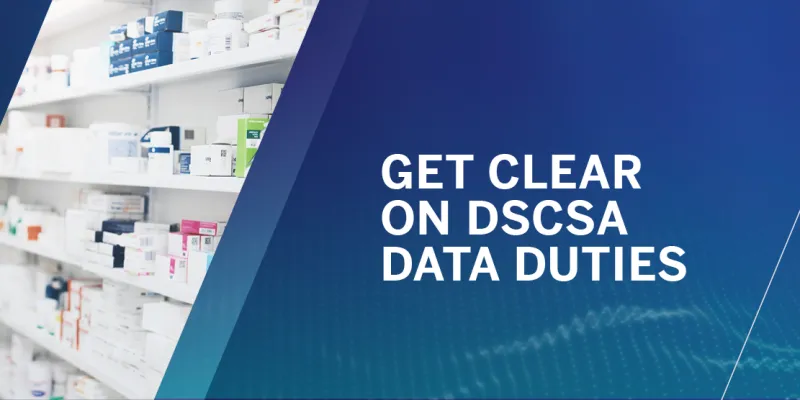
When it comes to complying with Drug Supply Chain Security Act (DSCSA) regulations, understanding how a product moves through the supply chain—and who’s responsible for sending the serialized data—can be complex. This is particularly true with dropshipments, where products do not follow the traditional manufacturer → wholesaler → retailer path.
Let’s break down the difference between direct purchase dropshipments and wholesaler dropshipments, and why understanding this is crucial for data flow under DSCSA.
Two Kinds of Dropshipments. Two Very Different Data Flows.
-
Direct Purchase Dropshipments
In this model, a retailer orders directly from the manufacturer, but instead of receiving the product at their warehouse, the manufacturer ships the product directly to the customer (usually a pharmacy, hospital, or consumer).
Order Flow: Customer → Retailer → Manufacturer → Customer
Data Flow: Serialized data comes directly from the manufacturer.What to know:
- The retailer owns the product, even though it never touches their warehouse.
- There’s no wholesaler involved, so serialized data from the manufacturer must be transmitted to the retailer or dispenser.
- This model often leads to better profit margins for the retailer—but places more responsibility on the manufacturer to send DSCSA-compliant data.
-
Wholesaler Dropshipments
In this scenario, the retailer orders through a wholesaler, who holds inventory from the manufacturer. The wholesaler ships the product directly to the customer.
Order Flow: Customer → Retailer → Wholesaler → Customer
Data Flow: Serialized data comes from the wholesaler.What to know:
- The wholesaler owns the inventory and fulfills the order when the retailer requests it.
- The retailer gets easier access to a wider range of products, but with lower margins.
- Since the product flows through the wholesaler (even if not physically), they are responsible for providing the DSCSA data.
So, Who’s on the Hook for Serialized Data?
Here's where it becomes tricky. Just because a product was ordered through a wholesaler doesn’t mean the serialized data comes from the wholesaler. If the product is being dropshipped directly by the manufacturer, the data should flow from the manufacturer, not the intermediary who processed the order.
This is why many organizations are identifying gaps in their DSCSA compliance strategies: they assume the data will come from the same source where the order was placed, but this is not always the case.
Why This Matters
Under DSCSA regulations, trading partners must exchange serialized data—typically in EPCIS format—for every transaction involving a prescription drug. If your systems expect data from a wholesaler, but it’s the manufacturer who needs to send it (or vice versa), you could face:
- Compliance gaps
- Delayed shipments
- Traceability failures
Understanding the nuances of dropshipment models is key to ensuring that your data flows align with your product flows under DSCSA compliance strategies.
What to Remember
Not all dropshipments are created equal—and under DSCSA, who ships the product doesn’t always align with who provides the data. Know your partners, map your supply chain, and verify where your serialized data is coming from in compliance with FDA DSCSA requirements—especially for products fulfilled outside the traditional warehouse model.
